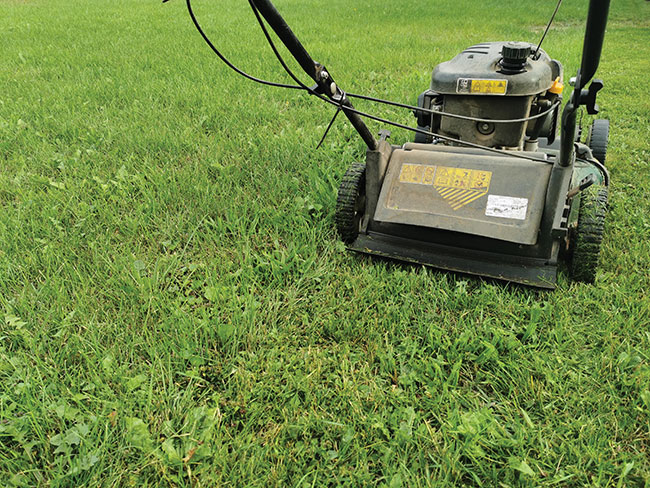
News
Eco-Friendly Practices
‘No Mow May’ is really a bad idea for lawns in Canada, U of Guelph experts say
Concept is well intentioned, they say, but does more harm than good
April 24, 2023 By Turf & Rec

The No Mow May campaign, which has been adopted by a growing number of municipalities, is a well-intentioned means to attract pollinators, but the promotion is also misguided, a pair of University of Guelph turfgrass authorities say.
“Dandelions aren’t going to save the bees,” says Dr. Eric Lyons, director of the Guelph Turfgrass Institute and a professor of the university’s department of plant agriculture. “A much better nutrition source for them are flowering trees, like crabapple, choke cherry and even maple, oak and willow.”
Many early-flowering weeds that can be found in lawns, such as dandelions, are actually an incomplete source of nutrition for pollinators, he adds. Creating temporary habitats in the form of an overly long lawn is not helpful to pollinators if the plan is to eventually mow the grass into a lawn.
Dr. Sara Stricker, communications and outreach coordinator at the GTI and an instructor at the university’s diploma in turfgrass management program, agrees.
“Allowing lawns to grow long can encourage the growth of undesirable weed species such as thistles, prostrate knotweed and wild violet, which are difficult to remove once they become established,” she says.
A better idea would be to create wildflower zones in home gardens with pollinator-friendly grasses and shrubs to benefit insects and wildlife all year round, they say, adding No Mow May can harm a home lawn from a turfgrass perspective.
Cutting too much of a grass’s length at once is also traumatic, leaving the grass with a sudden loss of an energy source during an active growing time, they add. Tall grass is also difficult to mow, which can increase the risk of “scalping” the turf, making the lawn more susceptible to insects, weeds and disease.
“We recommend mowing home lawns when the grass reaches approximately three inches high,” Lyons says. “Grasses have evolved to be grazed upon by herbivores, so they actually respond positively to mowing practices.”
He recently address the topic on The Weather Network.
Print this page